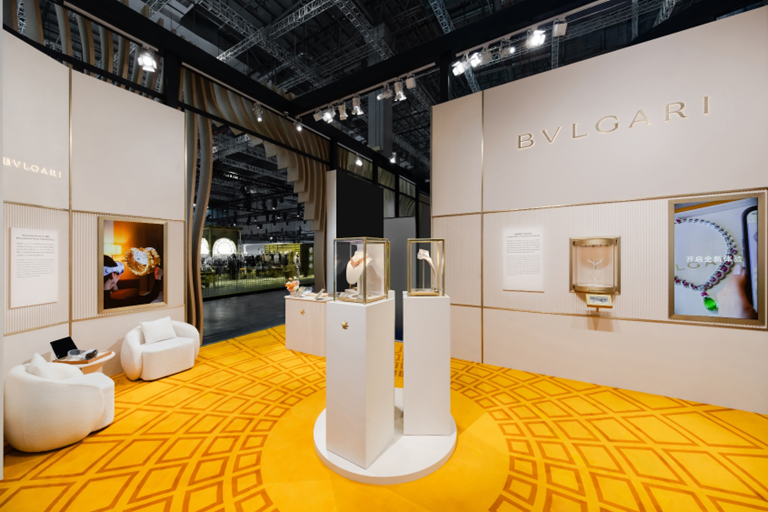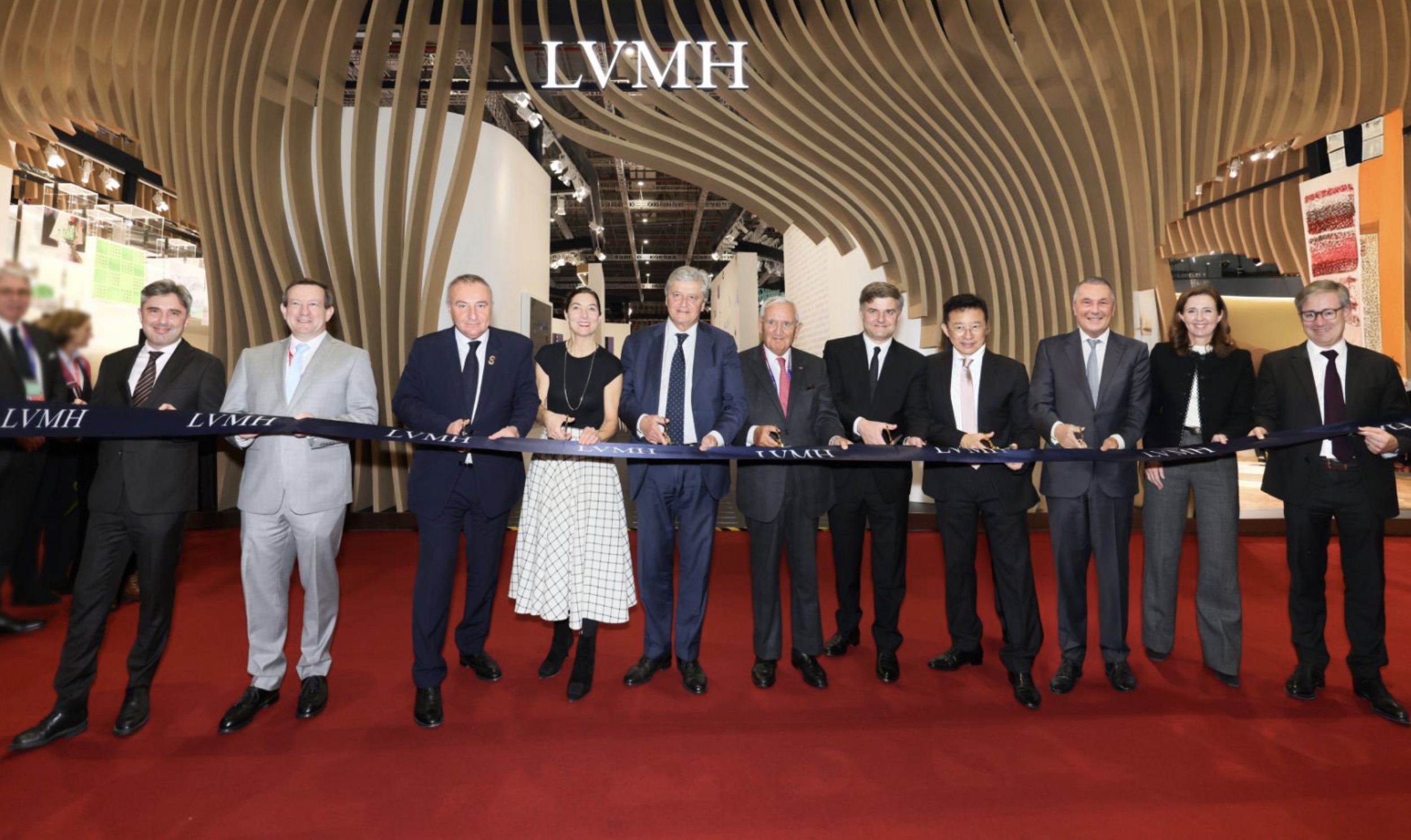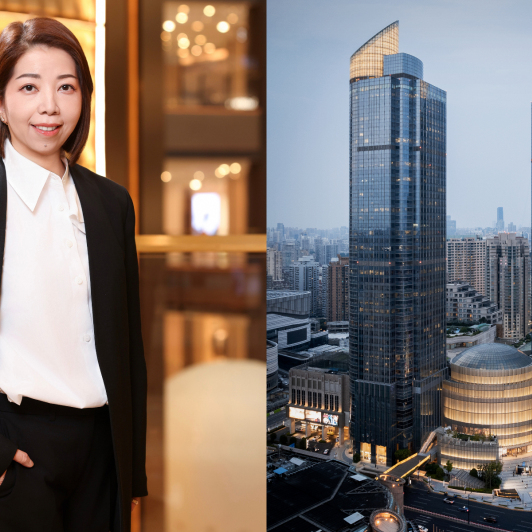China’s first sustainable lifestyle retail project, HAI550, has opened its doors on Shanghai’s Huaihai Middle Road.
As its name suggests, the HAI550 project is located at 550 Huaihai Middle Road, a site that holds fond memories for many locals in Shanghai. The building, with a history of 101 years, has undergone multiple transformations: from the Paris Theater in the 1930s, the Times Huaihai Cinema from the 1950s, to the Barbie global flagship store in 2009.
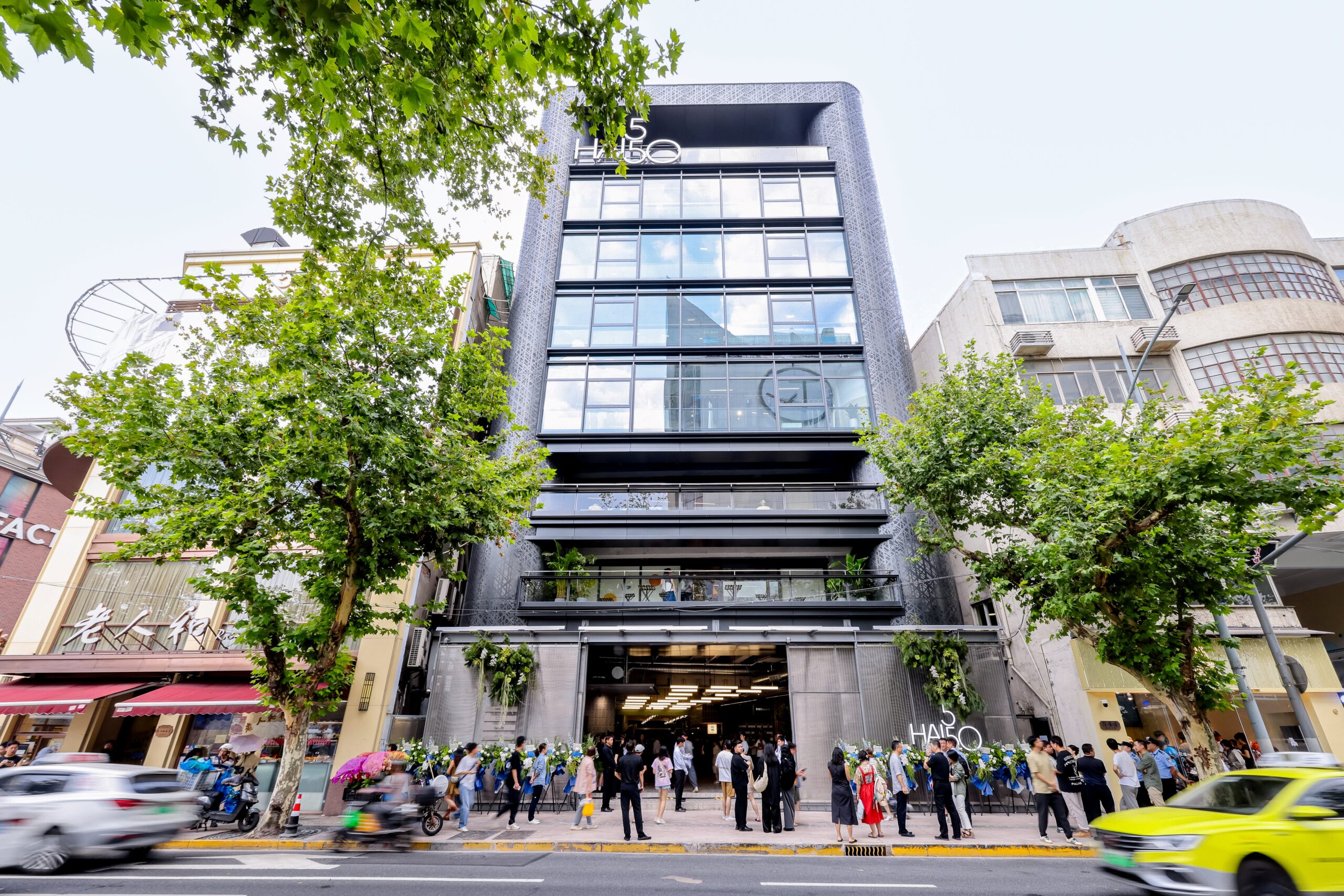
Now, it has a new “owner” and new “content”:
On the opening day of this 7,000-square-meter, eight-story commercial space, Luxeplace.com was invited for an exclusive visit. Our team engaged in discussions with the project owner Youngor Group, the leasing team from OōEli, curating artists, and several brand owners, gathering over 50,000 words of interview notes.
New ventures often emerge with vibrant energy, growing “in the cracks.” Just like today, as people lament the growing number of increasingly similar shopping malls, small and unique non-standard commercial spaces are beginning to spring up.
In this article, we attempt to explore the contradictions and highlights of this new commercial space from different perspectives. For instance: what advantages does a relatively small shopping mall have? Why did the first batch of brands choose HAI550? How does it collectively present a sustainable lifestyle?

1. Why are these attractive new-generation brands drawn to this place?
“I brought my entire team to Shanghai for an inspection, and my colleagues directly told me that large shopping malls and mature commercial areas don’t provide the same level of excitement and freshness. Malls in various cities all look pretty much the same,” Anita, the founder of UOOSEE, shared with us.
“I feel that Huaihai Middle Road is like the central street of the entire Wutong District. It’s called the central street because it brings together various diverse ‘labels.’ Every time we make a purchase, we are voting for the kind of person we want to be. This street, Huaihai Middle Road, spans a wide range of people, from their 20s to their 40s, who choose a variety of rich and diverse options according to their growth and understanding.”
Last year, UOOSEE was named one of the top five emerging brands by Xiaohongshu (Little Red Book). Anita aims to build a brand that excels at one thing throughout its lifetime. She and her team started by collecting discarded bicycle inner tubes from alleyways, drying the rubber material, and gradually developed the entire production chain for transforming waste tires into bags.
Born in Shenzhen, UOOSEE opened its first offline store at HAI550. Anita said, “I’m a person with a strong desire for exploration and experimentation, and I love taking risks, so we chose to come here.”

Anita jokingly said that she made the store out of a bunch of “junk,” using old doors to make cabinets and discarded wooden planks to make tables. The store is designed around the concept of “reincarnation,” symbolizing the second life of tires. Anita personally created a “reincarnation tube,” encouraging customers to throw old tires into the bin, which can be exchanged for “UOOSEE coins.”
Anita explained, “HAI550 resonates with founders who have a bit of an artistic side. Our understanding of trends and fashion, our vision of the future, and our deep understanding of things and the world are very much in sync. Although there are many places to choose from in Shanghai, what matters most to us is being where like-minded people are.”
On the second floor of the mall, we came across a store constructed from cardboard. This is WAARCHI, a lifestyle design brand founded by architects that focuses on traditional Chinese architecture.

The WAARCHI team designed a sustainable cardboard structure called “Blue Pavilion,” which uses an all-mortise-and-tenon structure to transform traditional Chinese architecture into modern art installations. The materials used in the installation, such as corrugated cardboard, birch wood, and construction scaffolding, are all 100% recyclable. Co-founder and architect Wang Yuxin describes WAARCHI as a “container brand.” She believes that architecture is a container designed by humans for themselves. She aims to use architectural design thinking to scale down and create lifestyle products, which currently include bags, vases, and decorative installations.
Wang Yuxin told Luxeplace.com, “When the HAI550 leasing team first approached us, they had only one or two pages of renderings. We enjoy visiting refined shopping centers, such as those in Tokyo and Kyoto. So, when I saw the project’s renovation of the building’s facade, the presentation of local Chinese brands, and the flow design, I could feel the thoughtfulness behind the entire project planning.”
She marveled, “Walking around here these past few days, the overall experience has been very comfortable. After walking through the area a few times, you quickly become familiar with it and can easily find your way around. We imagine how consumers will wander through the space; this is not a large mall filled with the same brands everywhere, but rather a place filled with freshness and refinement.“
This may indeed be the advantage of a small-scale commercial space with a rich brand combination and content curation. Compared to traditional large shopping centers, visitors can walk shorter distances, linger at will, and easily explore brands and products.
The tea brand tazaTe is designing a fermentation lab on the top floor of HAI550. The brand originated in Chengdu and opened its first store in Shanghai at HAI550.
TazaTe is dedicated to researching tea fermentation, aiming to bring the wild, interesting, and powerful natural flavors of tea mountains to urban consumers. Founder Alex explained, “Our customers care more about natural, healthy, and simple things.”
He added, “In our early discussions with the HAI550 team, we focused on specific technical issues. There wasn’t much negotiation; it was more about mutual trust. We felt that if we wanted a space to present this natural and authentic concept, there was no better place than here.”
Regarding the advantages and challenges of small-scale non-standard retail spaces like HAI550, MURMUR MI founder Koukou shared her perspective with us:
“Here, customers rely more on their aesthetic sense when making purchases and are more proactive in their choices, rather than just casually browsing in a complex. This aligns well with the audience we aim for—those who value sensory experiences and lifestyle aesthetics.”
“Shanghai has a discerning customer base with their own ideas about fashion and a preference for attending art-related events. So, we hope our new store in Shanghai can enter a commercial setting that is more avant-garde and artistic in its concept.” Koukou emphasized.

Koukou, who was previously an advertising professional and has nearly ten years of experience as an independent photographer, infuses MURMUR MI’s designs with a unique Oriental aesthetic. The brand often mimics natural forms, such as tree rings or human skin, in the prints and textures of its garments, advocating a lifestyle centered on “deep sensory experiences.”
MURMUR MI has won the Taobao iFashion Silver Needle Guide [Pioneer Original] Store of the Year award and currently ranks in the top three of Taobao’s God Shop List for light mature literary stores.
Last year, MURMUR MI opened its first store in Hangzhou, located in a standalone building by West Lake. For its first stop in Shanghai, they chose HAI550.
“HAI550 is not like conventional retail settings where sales are the priority; here, aesthetic concepts come first. As a brand, we really appreciate these aspects. We always believe that an idea and a set of values have the power to move people.“
MURMUR MI hopes its store will be an “urban oasis of nature,” a concept that Koukou feels aligns closely with HAI550’s vision.
However, she also acknowledged that a small-scale commercial space with a unique concept will inevitably pose some challenges in terms of attracting a natural flow of customers:
“Those who don’t belong to this lifestyle may not actively step inside. So, in this project, we’ll be paying close attention to how HAI550 collaborates with brands to promote these values.”
In our conversations with these brand founders, we sensed that the new generation of brands has a distinct personality. Driven by consumer demand, brands are actively seeking different retail formats.
When expanding into offline retail, the new generation of brands is not only focused on sales but also places great importance on the concepts and values of the retail project.
2. How does HAI550 create a cluster effect for sustainable lifestyles?
Sustainability is globally recognized as one of the most important issues.
Recently, we’ve seen sustainable initiatives emerging in commercial spaces across China, such as Anta’s first sustainable concept store—the Zero Carbon Mission Store—on Wukang Road in Shanghai, and now HAI550, where sustainable brands and concepts are appearing together for the first time.
Sustainability is not only the theme of the content curation in this commercial space but also resonates with the philosophy of each brand present, reflected in the design and production of their products.
Sustainability is a lifestyle that resonates more with today’s younger generation. In the fashion industry, it requires not only practice but also interaction and communication.
On the first floor of HAI550 is the Patagonia Worn Wear Repair Station (pictured below), where people can participate in the “Don’t Follow Trends” weekend swap markets, experience the “Worn Wear Practice” outdoor gear repair service, and join workshops for upcycling and repurposing outdoor clothing.
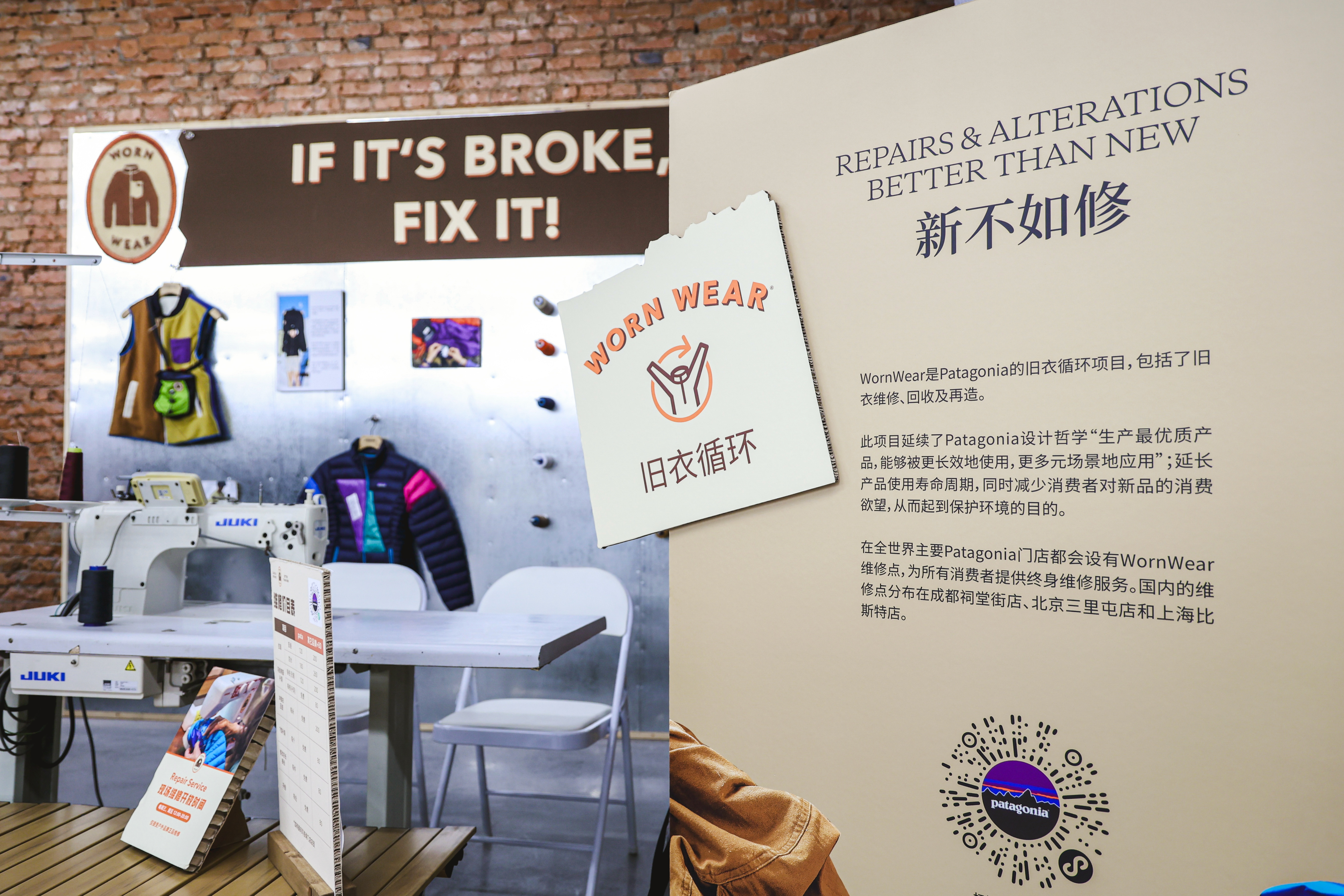
STOP SHOP has opened its second store at HAI550 (pictured below). This is a concept store that features a selection of health food brands, sustainable lifestyle brands, and ethnic handicraft brands. The new store includes a larger bulk purchase area, offering a retro, low-carbon, and environmentally friendly “zero-packaging” service, where customers can bring their own containers to fill up on organic soy sauce, bulk dried fruit snacks, and pet food, as well as aromatic liquids, scented candles, and various personal care products.

Next to STOP SHOP is Youngor’s “Innovation 100” space (pictured below). Launched in 2021, the “Innovation 100” project is an important platform for Youngor’s talent strategy, bringing together emerging designers from around the world and building an international fashion design creative platform to continuously provide creative inspiration for Youngor’s product development.
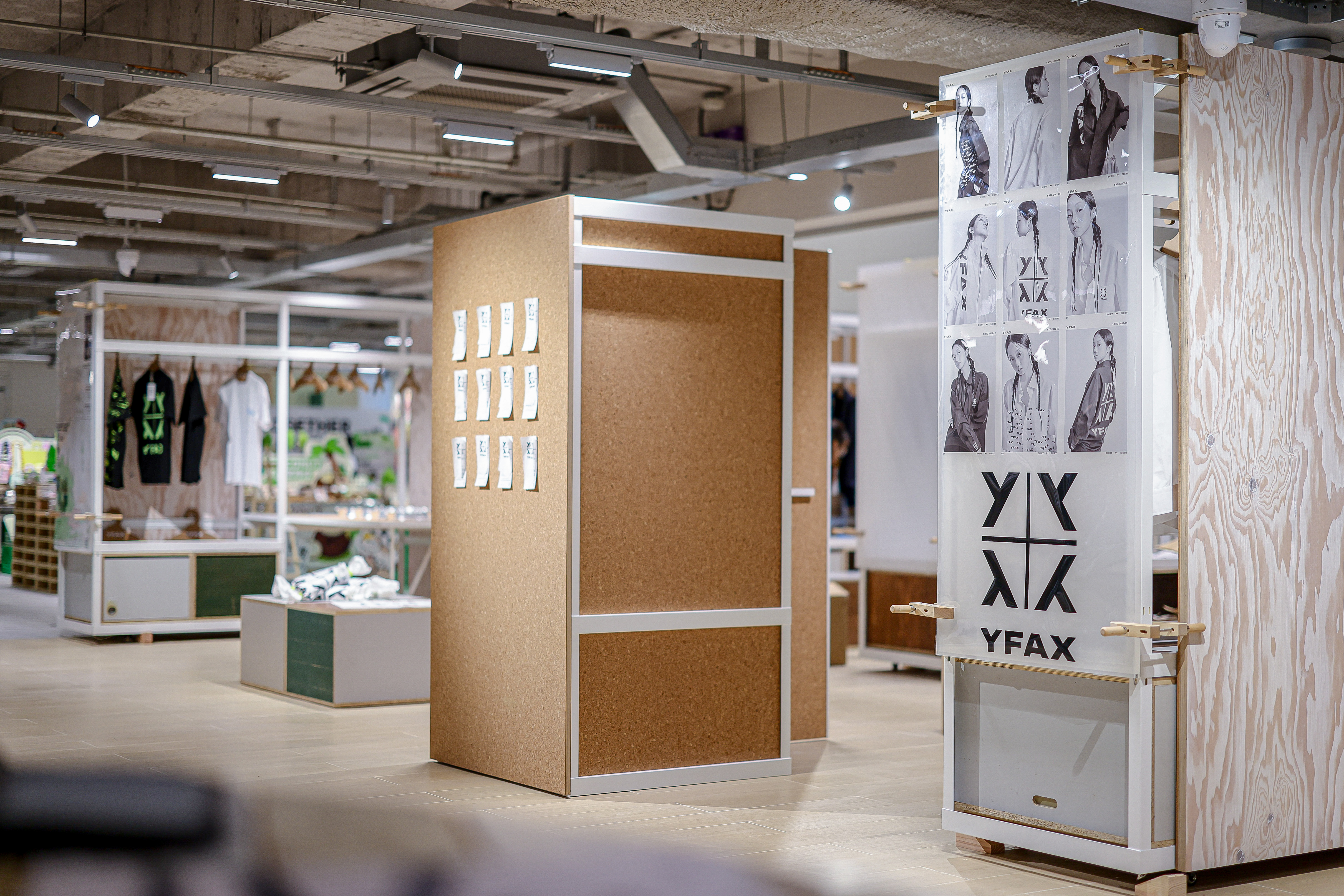
On the fourth and fifth floors of the mall, we also found China’s first B Corp-certified sustainable and eco-friendly enterprise, HowBottle, a clothing brand called PADDY POST that makes various lifestyle products from leftover materials, and madnomad, a brand whose shoes are equivalent to recycling 6.7 plastic bottles from the earth, among other interesting and meaningful brands.

HowBottle’s main products are bags made from recycled plastic bottles and ocean fishing nets. It has opened its first offline retail space, the “Slow Flash Store,” at HAI550. The store’s primary materials were sourced in collaboration with master craftsmen involved in the restoration of ancient Zhejiang architecture, using offcuts from traditional wooden structures made of imported African red sandalwood. The metal fittings on the display walls were sourced from surplus materials at large ship component factories, and a coin-operated arcade machine was handmade using leftover wood after construction.
The HAI550 building project itself also utilizes recycled materials in its renovation.


The entire wall and floor on the first level of HAI550 are made from terrazzo waste materials, and the beauty retail space B1OCKBEAUTY uses discarded furniture panels from Suzhou residences. From leasing, store design, and product display to event curation, most of the stores in HAI550 use cardboard and wood materials, with shop furniture and displays that are lightweight, modular, easy to store, and simple to set up.
Alex from tazaTe described HAI550 as a place where “every floor has a different concept, and every participant here loves life. Everyone sincerely shares what they like.”
The brand founders at HAI550 seem to share a certain “uselessness” or “anti-materialism” romantic sentiment. As Alex put it, “Consumption doesn’t necessarily bring happiness; buying the right things is more important. Sustainability is a challenging concept, and creating a space that avoids overconsumption is even more difficult. But I think, when you find a place where people who understand you have prepared things you will definitely like, every time you step inside, you will feel happy and relaxed. That’s the most natural and comfortable kind of commercial space.”
3. Content: The Lasting Motivation for Engagement
Creating a new commercial space requires both forward-thinking project planning and sustained long-term operations.
As the project owner, Youngor Group possesses a deep understanding of various brand types, commercial retail, and even space design. For the HAI550 project, Youngor Group has maintained close and ongoing communication with the OōEli team.
Wang Yang, General Manager of Operations at OōEli, explained that in a small-scale project like HAI550, content will be the lasting motivation that attracts people.
The entire first floor of HAI550 is not divided into store spaces; instead, it is fully dedicated to content, hosting various pop-ups, exhibitions, and events.
On the opening day, the open space on the first floor simultaneously hosted two events: Patagonia’s old clothing workshop and the mechanical art installation “RealitiesPrinter.”
“Content first requires space. We don’t fill the space entirely with content but rather leave room for flexibility. Gradually, people will gather, coming to see exhibitions, participate in events, and engage in conversations,” Wang Yang said.
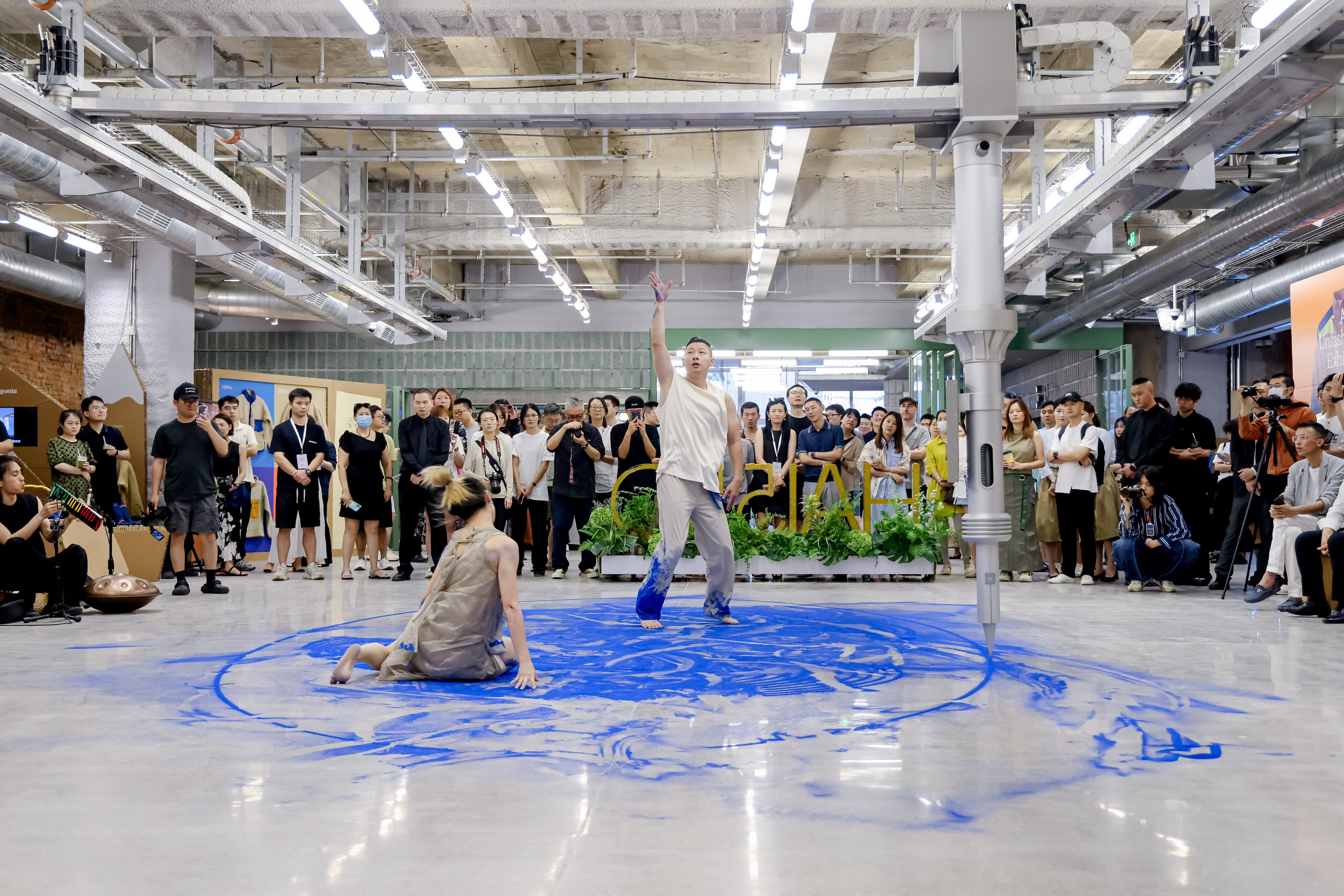
“RealitiesPrinter” was custom-designed for the HAI550 venue, integrating mechanical installations with interactive human art.
Guo Xi, a member of the artist team behind the project, mentioned that curating art projects in commercial spaces remains an innovative and challenging task:
“This is different from the art spaces that artists are familiar with, such as museums and galleries. The overall design of a public commercial space isn’t centered around the artwork, so you must constantly imagine what kind of audience you are facing. When conceptualizing your work, you need to break away from your original artistic habits.”
“The concept of commercial art must be renewed among the public. The relationship between artists and commerce, and between people and space, is undergoing a subtle transformation.”
Youngor has also introduced an innovation lab here—Youngor Lab (pictured below).
Youngor Lab targets young consumers, offering a unique shopping experience with its laboratory concept. The space, entirely white like an art gallery, is comfortable and serene, with shirts displayed like paintings on the walls, representing an interesting attempt at appealing to a younger audience.

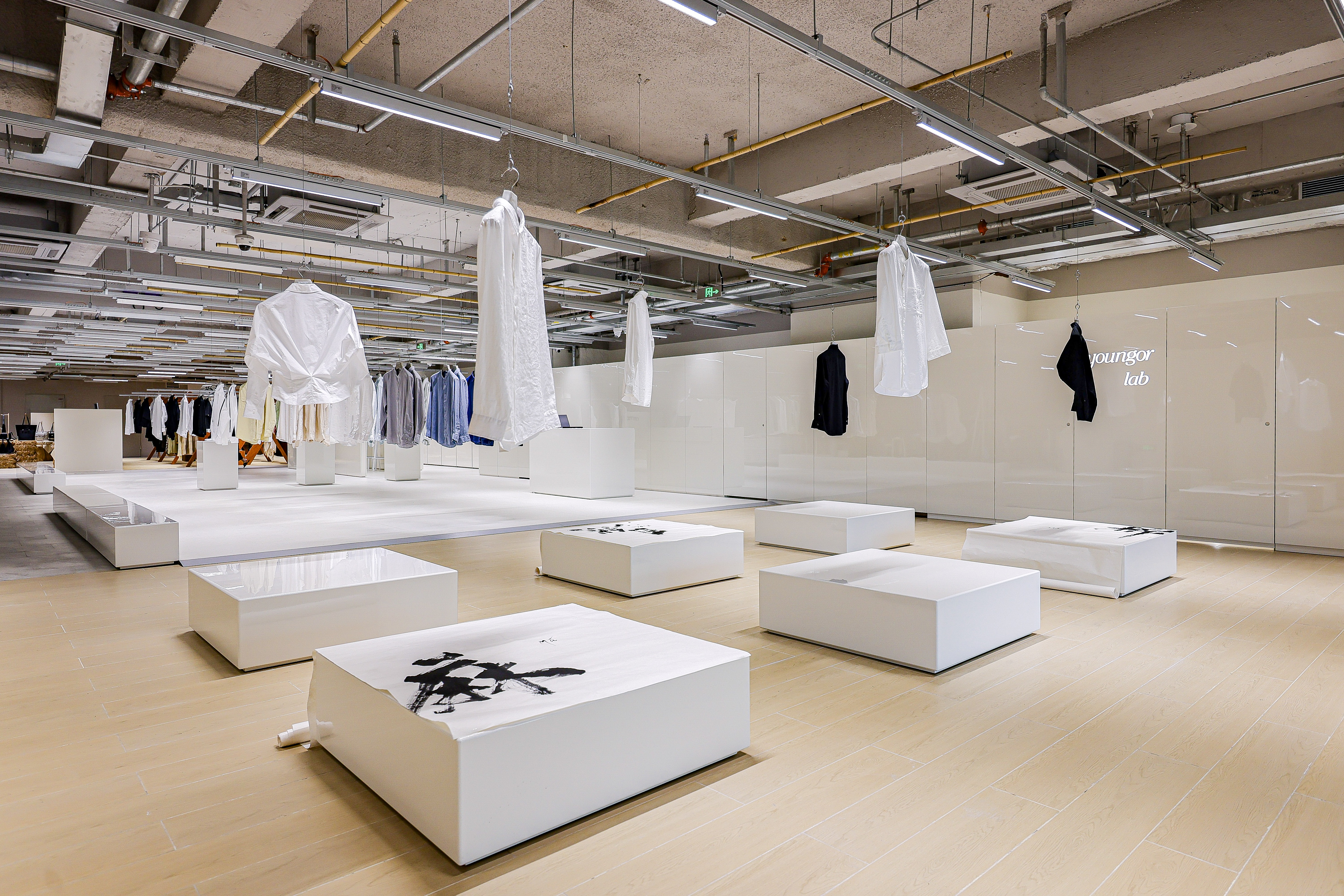
During our visit, we noticed that many brand owners were considering how to curate more offline content.
Koukou, the founder of MURMUR MI, shared: “When we were operating online, we always wanted to expand offline because we have so much to say, and the online space is somewhat limited. We hope our physical space isn’t confined to just selling clothes. We can also create salons and art events to deepen customers’ understanding of the brand.”
Conclusion
When the scale of a commercial space is reduced, what stands out? What kind of character emerges?
When we see a commercial experiment like HAI550 standing in the gaps of a bustling urban area, we are reminded of the evolution of commercial development in Japan, which transitioned from large commercial districts to smaller spaces, from city centers to communities, and from independent operations to joint ventures. They evolved towards increasingly “niche and specialized” and “refined and deep” concepts.
In China, under the context of urban renewal, the concepts of non-standard commercial spaces and refined retail are growing, providing differentiated solutions and offering consumers diverse choices. HAI550, as the first non-standard commercial space focused on sustainable lifestyles, holds forward-looking significance.
From another perspective, this also reflects the continuous research and insights into retail trends by its owner, Youngor Group.
This year marks the 45th anniversary of Youngor Group’s founding. In recent years, Youngor has repeatedly emphasized its commitment to focusing on its core fashion business. The group has been advancing the construction of its brand matrix and further improving the layout of its fashion industry ecosystem:
For example, it has collaborated to operate the Norwegian brand Helly Hansen, extending consumer scenarios into outdoor activities such as sailing and skiing; it has acquired a 40% stake in the American streetwear brand Undefeated and established a joint venture in Greater China to accelerate its reach to younger consumers. Additionally, Youngor has invested in designer brands like Alexander Wang.
This bold and unique attempt in the non-standard commercial sector, along with the Innovation 100 space and Youngor Lab, signifies that Youngor Group has gained a comprehensive and new understanding of brand power building, innovative retail, and insights into young consumers, marking an important step forward.
What potential and new possibilities might HAI550, and other small but refined non-standard commercial spaces, bring in the future? Let’s wait and see.
| Image Credit: Provided by HAI550, various brand WeChat and Xiaohongshu accounts
| Editor: Elisa

